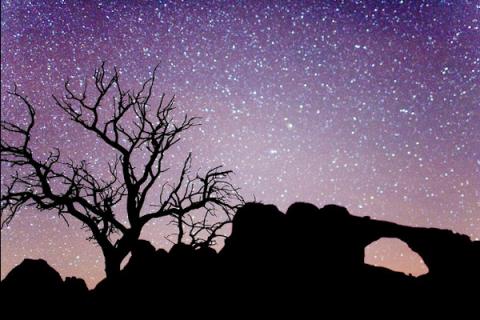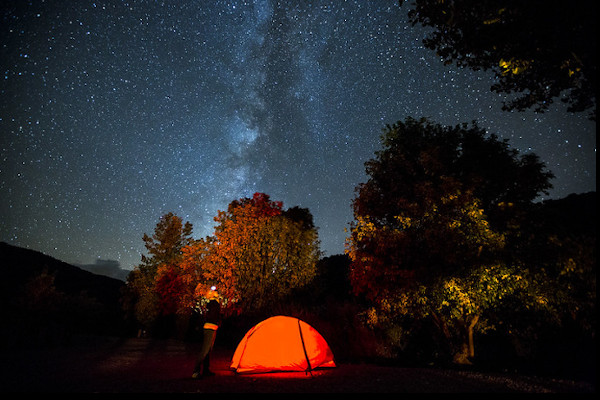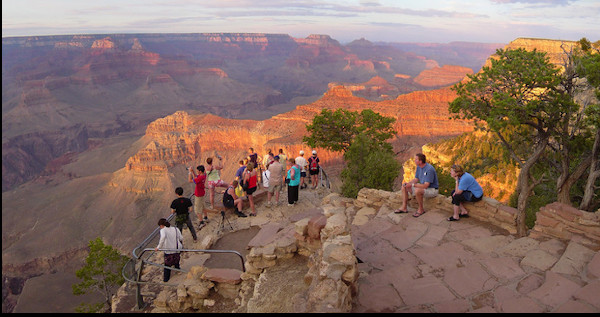The Most Socially Distant Vacations of 2020

What’s the most socially distant vacation of 2020? That’s an easy one for Daria Bachmann: Grand Staircase Escalante National Monument in Utah.
How distant is it? Fewer than a million people visit Grand Staircase a year, just a fraction of the nearby Grand Canyon’s 5.9 million annual visitors. The closest major city, Las Vegas, is a 4 ½ hour drive away. It’s so far from civilization that it has a reputation for its dark skies, attracting stargazers from around the country.
And its cliffs, terraces, and bright orange stone arches will drain your camera’s battery.
“I can recommend it to anybody who wants to escape the crowds and do some backcountry hiking and camping,” says Bachmann, who publishes an adventure travel website.
So can I. The last time I drove through Grand Staircase, I didn’t see anyone when we pulled over to hike on one of the popular trails. That’s right, we had the place to ourselves. Now that’s remote.
This summer, there are two kinds of travelers: the ones who have already canceled their vacations, and the ones who want to get out of town — way out of town.
Fearful of COVID-19 but unwilling to spend another moment indoors, they’re looking for out-of-the-way places like Grand Staircase to climb out of their pandemic isolation for a few days to enjoy nature.
But where are these socially distant vacations? How do you find them? And are they worth visiting now, with a second wave of the coronavirus pandemic on the horizon?

Where are the most socially distant vacations of 2020?
Here’s the problem: Everyone’s definition of “distant” is different. Does it mean far away from where you are now? Or far from the nearest coronavirus hotspot? Or maybe just away from the crowds of summer vacationers?
Industry-watchers like Victoria Simmons, a senior vice president at the ad agency BVK, say that for many travelers, it comes down to one thing: freedom.
“Watch for a rise in once-in-a-lifetime, no-regrets trips,” she says. “Travel focused more on personal development and less on souvenirs.”
In other words, the new American vacationer wants to get away from civilization without traveling too far. They want it to be unique. And they want it to be meaningful — less Vegas, and more Grand Staircase.
Try these socially distant vacation hikes in the United States
Sound impossible? I thought it was, too. So I asked the experts at AllTrails, the hiking app, if they could help. They compiled a list of the most isolated hiking trails exclusively for this site. AllTrails’ recommended paths include the Thomas Creek Trail in eastern Nevada’s Ruby Mountain Wilderness, Barren Mountain and Cloud Pond on Maine’s Appalachian Trail, and a 44-mile hike in California’s King Range Wilderness.
But AllTrails’ medical director, Suzanne Bartlett-Hackenmiller, says you have to do your homework before you go anywhere.
“Make sure to check ahead for park and facility closures,” she told me. “Even if the park is open, the facilities — including restrooms, water fountains, and parking lots — may be closed.”
I’m based in Reno, and I’ve been drawn to the eastern part of the state for its remoteness. If I had five hours to drive to the Ruby Mountain Wilderness, I would also check out the Nevada Northern Railway in Ely. The vintage train takes you deep into White Pine County in the far reaches of eastern Nevada. It has some of the darkest skies in the continental United States. There’s a sunset train excursion that looks perfect for getting way, way out of town.

Where are the remote places to take a vacation in America?
So where are people going? Michael Heflin, president of Andrew Harper Travel, says his customers are defining “remote” differently. It’s not that they want to leave civilization behind. Quite the contrary, they want to take a little civilization with them.
“Travelers are discovering the beauty of remote spots that are perfect for social distancing,” he says. “And many of them are in the continental United States. Remote doesn’t necessarily equal roughing it, though.”
In fact, Andrew Harper clients’ top 10 bookings are all in nonurban areas. Here’s where they’re headed:
Blackberry Farm, a small luxury hotel and resort on a 4,200-acre estate in Tennessee’s Great Smoky Mountains.
Sanctuary at Kiawah Island Golf Resort in South Carolina.
San Ysidro Ranch, a historic hotel near Santa Barbara, Calif.
Triple Creek Ranch, a luxury resort in Darby, Mont.
Wequassett Resort and Golf Club in Cape Cod, Mass.
“Luxury properties in remote destinations are prepared to give their guests the full luxury experience,” says Heflin. “Many even offer options like private villas and private chefs — very attractive during the pandemic. And one of the best parts is that travelers don’t need to hop on a plane for eight or more hours to get to these spots.”
Socially distant vacation considerations
If you’re looking for a little space this summer, you have to be prepared. That’s the advice of John Gobbels, the chief operating officer for Medjet, and an avid explorer. He carries an emergency kit with him stocked with essential medications, including Tylenol, Aleve, Benadryl, antibiotic ointment, bandages and insect repellent.
“A remote area may mean that the nearest medical facility is not very well-equipped for severe injuries or illnesses,” he says.
Gobbels also recommends reviewing your health insurance’s medical coverage before you leave. Your policy should cover at least a portion of transport from the local ER or regional facility if it’s medically necessary. And take sensible precautions once you’re there, too, so that you’ll never have to find out if your travel insurance will cover you.
If you’re looking for a remote vacation this summer, here’s some expert advice that will get you there and back safely:

Socially distant doesn’t always mean far away
If you’re in Las Vegas, you can make it to Grand Staircase in a few hours. If you’re in Reno, you can get to Ely in half a day. You can reach California’s King Range Wilderness from San Francisco in about the same amount of time. There are pockets of remoteness almost everywhere, and they’re closer than you think.
Zig when everyone else zags
Go for state parks and national forests instead of the better-known — and often crowded — national parks. Contrarians will be rewarded this year with more social-distancing opportunities (and perhaps fewer health risks).
Later is better than sooner
The travel experts without a vested interest agree: Don’t travel now. With a second wave of COVID cases likely, you might be better off delaying that summer “remote-cation” until the early fall.
Author Bio:
Christopher Elliott is the founder of Elliott Advocacy, a 501(c)(3) nonprofit organization that empowers consumers to solve their problems and helps those who can’t. He’s the author of numerous books on consumer advocacy and writes weekly columns for King Features Syndicate, USA Today, and the Washington Post. If you have a consumer problem you can’t solve, contact him directly through his advocacy website. You can also follow him on Twitter, Facebook, and LinkedIn, or sign up for his daily newsletter.
Highbrow Magazine
Image Sources:
--Skeeze (Pixabay, Creative Commons)
--Bocb Wick (Bureau of Land Management, Flickr, Creative Commons)
--Michael Quinn, (National Park Service, Flickr, Creative Commons)
--PXfuel (Creative Commons)





























































































































































































































































































































